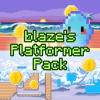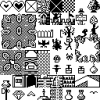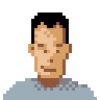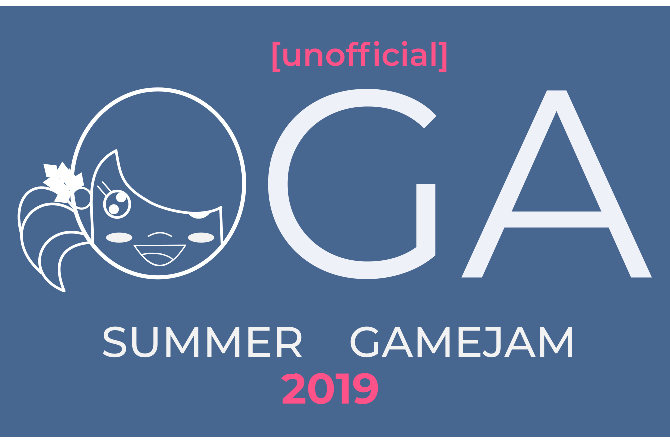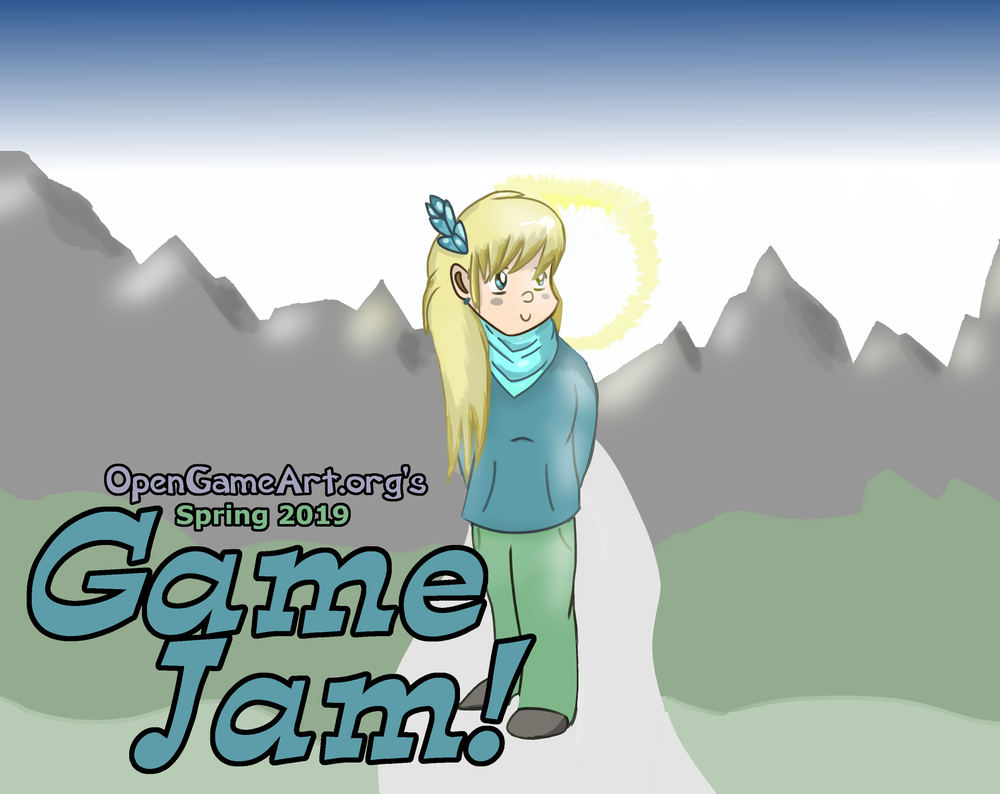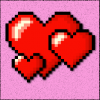Chat with us!
Discord: OpenGameArt
discord.gg/yDaQ4NcCux
Active Forum Topics - (view more)
- Sharing My Music and Sound FX - Over 2500 Tracks by Eric Matyas
- Mix distribution by glitchart
- Bump Requests by Nexuso3o3o
- Fantasy World Map by Stolenham53
- Slowly getting somewhere, learning opengl and ocaml along the way. by blue_prawn
- Is it possible to have a offline version of this site like wikipedia does? by Tsorthan Grove
- temp. disabl.d by MedicineStorm
- tools by blue_prawn
Recent Comments - (view more)
- Re: Urban Shop by Pixima
- Re: 20 Gases by Lyricsz
- Re: Grassland Tile Set by stratoavis
- Re: Grassland Tile Set by MedicineStorm
- Re: Mountain at Dusk Background by AgentWolf6666
- Re: Gods Forbid by yemáko
- Re: 20 Gases by zooz
- Re: Sirens in Darkness by mjacobsca
Popular This Week - (view more)
Latest Art - (view more)
Latest Art by my Friends - (view more)
Featured Art - (view more)
Hi folks!
Just wanted to say a big thank you to GameBoom for agreeing to host OGA. What this means for the site is that the $200/month I was paying out of pocket for hosting can all go toward additional art commissions. The machine we're on right now is every bit equal to the old one (if not a bit beefier in terms of processor power), and it's hosted by a great group of people (as opposed to the spam-friendly host I used to have, which was on email blacklists and had hours of unannounced downtime).
On a related note, if you happen to notice some slowness over the next couple of days, please note that we're in the process of getting everything tuned correctly, so there may be a few bumps. The default configuration files that come with CentOS tend to assume that you've got unlimited RAM, so I'm making some adjustments. Hopefully the worst is over. Also, if you run into any errors, please leave a comment here (or contact me with the site contact form) so I can address them quickly.
Peace!
Bart
- bart's blog
- Log in or register to post comments
OGA now supports Flattr boxes on individual art pages! If you'd like to let people Flattr your artwork, click on "My Account" at the top of the page, click the "Edit" tab, and then fill in your Flattr UserID. It's that simple. :)
- bart's blog
- Log in or register to post comments
Hey folks!
Just a heads up. We're going to be giving out badges for the weekly challnges from now on. There will be a unique badge for each challenge (silver for participants and gold for the winner), and if you don't enter into the challenge, you'll miss out on that badge. :)
Here are the badges for this week's Minibosses challenge:
![]()
![]()
These are based on sunburn's medal bases and use an icon from Ails' fantasy icon set. They're licsensed CC-BY-SA 3.0 if you want to use them for anything. :)
Note that I'm completely open to letting other people design the weekly challenge badge, so let me know if you're feeling up to it. :)
Peace,
Bart
- bart's blog
- Log in or register to post comments
Hi folks!
Just a quick heads up. On the home page, immediately below this post, are two new blocks. One of them lists the top submitters in the last 30 days, and the other one lists the most popular art in that same period. I've removed the old "most popular" block, as it was self-reinforcing and pretty much always showed the same stuff. :)
Anyway, this is a competition, and unless you're in first place, there are people ahead of you. Are you okay with that? No? I didn't think so. Better submit some art! :)
Bart
P.S. Kudos to WeaponGuy, who is in the lead at the time of this post.
- bart's blog
- Log in or register to post comments
A couple of days ao, I wrote a blog post in which I advocated for the creation of easy-to-use, integrated content editors in Open Source video games. I got a lot of interesting replies, and I'd like to address some of them here.
One very valid point that was made is that in the FOSS community, we tend to re-invent the wheel a lot, and that there are a number of very good content creation tools (such as Tiled) out there already that people can use to make game content. My response to this is that Tiled is an excellent program. In fact, it would be a good start if people who made tile-based games would take a look at tiled before they jump into coding and make an effort to make their map format compatible with it. In fact, it's important to point out that I'm not calling for every open source game to make an integrated editor -- it's a huge project in itself, and it's more important that you have a game in place first. The editor can come later.
A couple of people suggested that it's okay for game content creation to be hard because if someone doesn't want to open a text editor, they probably won't be able to make a good level anyway. I'll concede that by making content editing ridiculously easy, you will open the door to a lot of people who are just fooling around and won't make very good content. And, if you allow them to upload that content to your central server, you'll have a small amount of good content surrounded by a lot of bad. The way existing proprietary games deal with this is by having a rating system. Allow your users to rate new content as it comes in, and then place the highly-rated content more prominently than the low-rated content. In doing so, you filter out the bad stuff, but at the same time you give everyone a chance to try content creation. Furthermore, even the greatest artists all start out as beginners. Thos few faltering steps into creating game content may be the beginning of something huge, even if they don't look like much at the time.
One person pointed out that FOSS games lack coherent art direction and that content editors would make this problem worse. My repsonse there is that some FOSS games have perfectly good art direction and a consistent style, and some don't. Regardless, allowing user-created content isn't going to make the problem worse. In fact, one very important piece of any easy-to-use game content editor is a set of building blocks for making content in that game. For instance, in Mod Nation Racing's editor, you are supplied with a number of track styles, obstacles, and other details that allow you to put a track together in a style that's consistent with the existing game. So I wasn't suggesting that people be forced to start with individual pixels and polygons -- to the contrary, you should supply art to your users that they can use to build levels in a way that's artistically consistent with your game.
Finally, there's the issue of inherent complexity. Most levels are going to need to be scripted in some way. And admittedly, tying someone to graphical programming is fundamentally limiting, because logic blocks are only going to be as capable as the logic inside them. Ultimately, this is the hardest problem you run into putting together *any* user interface. The best user interfaces deal with this issue by being like an onion. No, Donkey, they don't stink, they have layers!
Imagine that you're a user and you want to try building a level for some game. So you fire up the level editor and poke around for a bit. The level drawing tools are laid out in an obvious way, so you draw up a simple level and test it out, all while still getting a feel for the editor. At this point, you haven't touched any logic or scripting, because the editor has cleverly concealed those more complicated functions in a place where you won't go looking until you care about them. As you wander around your level, you find that the enemies act in a very generic and predictable way. Maybe you'd like to have one jump out at you when you walk past a certain point, but you're not sure how to do it.
So, you hop back into the level editor and load up the level you just made. You put an enemy roughly where you want it to jump out, and, just on a lark, you right-click on it. Up pops a menu that allows you to modify that enemiy's properties. There's some obvious stuff, like changing the enemy's appearance and stats. Further down the menu, you see something labeled "Action Triggers", so you click on it.
A dialog pops up. From here, there's a drop-down box labeled "Conditions". You browse through it and find one that says "Player enters area". You pick that one, and are prompted to select an area on the level map, so you do so. Another pull-down box, labeled 'Actions", has an option labeled "Move this enemy", so you select that, and are then prompted to pick a path along the map for the enemy to move. You've now successfully added some interactivity to your map without editing a script or reading voluminous documentation.
You play through your map again and are pleased with the result, but you want more. The map editor has allowed you to do a lot, but you'd like to push the game engine a bit further, and you've come up with a cool idea that the game designers didn't account for in their Conditions and Actions. On the Action Triggers dialog is a button labeled "Download More Actions", so you click on it, and you see a list of user-created actions along with descriptions. You find one that almost meets your needs, but falls short in some way, so you download it. Then, you fire up the game's integrated code editor and tweak the script in some useful way, and upload the new version back to the community so they can use your code as well.
In the above scenario, the developer has made the beginning and intermediate steps (which are, in general, usable to create an entire level) available right inside the editor with no code whatsoever. And, the advanced step of writing code has been distributed to the community in a way that the Open Source model works in the users' favor.
Call me crazy, but I think it might actually be doable. We'll have to work at it, though, because it certainly won't be easy.
- bart's blog
- Log in or register to post comments





